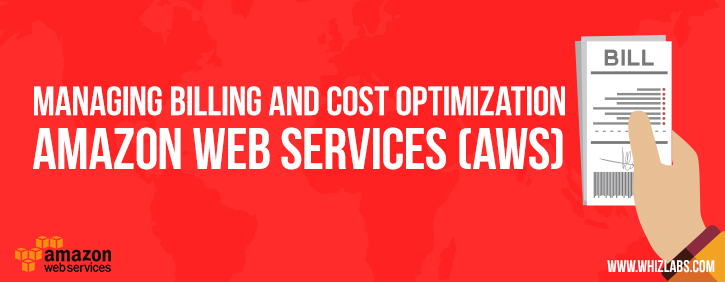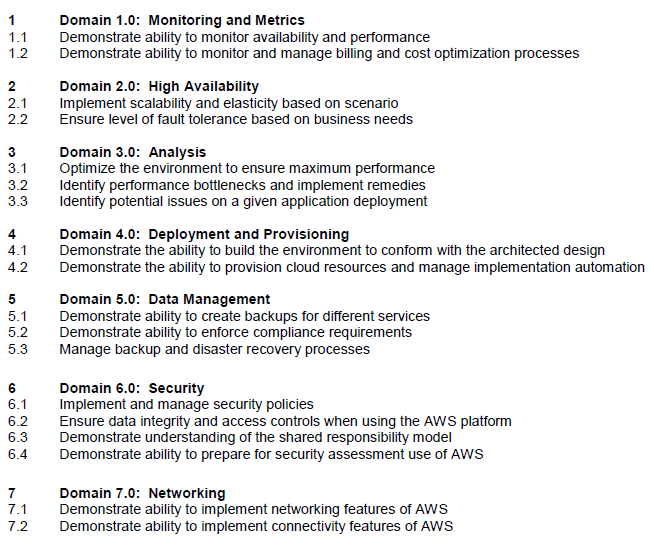Are you preparing for AWS Certified SysOps Administrator – Associate certification exam? Are you ready to pass this exam? In this blog, we are writing a series of articles on topics which are covered in the AWS Certified SysOps Associate certification exam. You can subscribe to us for receiving further updates on this topic.
The SysOps Associate certification exam is the hardest exam at the associate certification level. We would recommend you pass both solution architect associated certification exam and developer associated certification exam first before of taking this exam.
The AWS Certified SysOps Administrator – Associate exam validates technical expertise in deployment, management, and operations on the AWS platform
- TRY NOW : 10 Free Practice Questions for SysOps Associate Exam
- OFFER : 420 Practice Questions for SysOps Associate Exam (50% Discount)
The AWS Certified SysOps Administrator – Associate Level exam validates the candidate’s ability to:
- Deliver the stability and scalability needed by a business on AWS
- Provision systems, services, and deployment automation on AWS
- Ensure data integrity and data security on AWS technology
- Provide guidance on AWS best practices
- Understand and monitor metrics on AWS
Figure #0. Domains covered by the AWS Certified SysOps associate exam
You can download the related AWS Certified SysOps Administrator – Associate Level Exam Blueprint for more detail about it.
In this article, we are going to explain about the topic that addresses the “demonstrate the ability to monitor and manage billing and cost optimization process” as highlighted in the AWS Blueprint from the above exam guide.
Context
The Cloud computing provides agility for organizations. It mays increase users’ flexibility with re-provisioning, adding, or expanding technological infrastructure resources fast. Also, it could contribute to cost reductions.
It is a model for enabling ubiquitous, on-demand access to a shared pool of configurable computing resources which can be rapidly provisioned and released with minimal management effort, where you have a pay-as-you-go approach.
A report from IDC indicates that AWS customers achieve important financial benefits that help increase growth, drive efficiencies, and realize important long-term cost reductions.
In AWS, you pay only for the individual services you need, for as long as you use them, and without requiring long-term contracts or complex licensing. AWS pricing is like how you pay for utilities like water or electricity. You only pay for the services you consume, and once you stop using them, there are no additional costs or termination fees.
You can effectively manage and control your AWS costs, and pay for only what you use. To help you manage your charges, AWS provides features that help you monitor your costs and pay your bill for one or many AWS accounts that you use in the cloud.
What is Amazon AWS Billing and Cost Management?
AWS Billing and Cost Management is the service that you use to pay your AWS bill, monitor your usage, and budget your costs.
The service automatically charges the credit card you provided when you signed up for a new account with AWS. Charges appear on your credit card bill monthly. You can view or update credit card information, and designate a different credit card for AWS to charge, on the Payment Methods page in the Billing and Cost Management console
You can effectively control your AWS costs by following a few simple steps:
- Right-size your services to meet capacity needs at the lowest cost
- Save money when you reserve
- Use the spot market
- Monitor and track service usage
- Use Cost Explorer to optimize savings.
You can choose to have AWS publish billing reports to an Amazon Simple Storage Service (Amazon S3) bucket that you own. You can choose to receive reports that break down your costs by the hour or month, by product or product resource, or by tags that you define yourself. AWS updates the report in your bucket once a day in comma-separated value (CSV) format.
Billing reports provide information about your usage of AWS resources and estimated costs for that usage. You can have AWS generate billing reports that break down your estimated costs in diverse ways:
- By the hour, day, or month
- By each account in your organization
- By product or product resource
- By tags that you define yourself
How to create a Billing Alarm?
Billing alarms can help to protect you against unknowingly accruing charges if you inadvertently use a service outside of the free tier or if traffic exceeds your expectations. Before you create a billing alarm, you must enable billing alerts using the Billing and Cost Management console at the preferences page. It’s a clever idea to create a billing alarm to notify you if you exceed the limits of the free tier.
If you want to send your alert to an AWS-managed distribution list instead of a single email address, you should set up an Amazon Simple Notification Service (Amazon SNS) notification list.
You can create a billing alarm to receive -mail alerts when your AWS exceed a threshold as follow:
- Using the AWS Billing and Cost Management console as part of your AWS Management Console
- Enter your spending threshold
- Provide your email notification list or email address
- Check your email inbox for a confirmation link and confirm your alarm
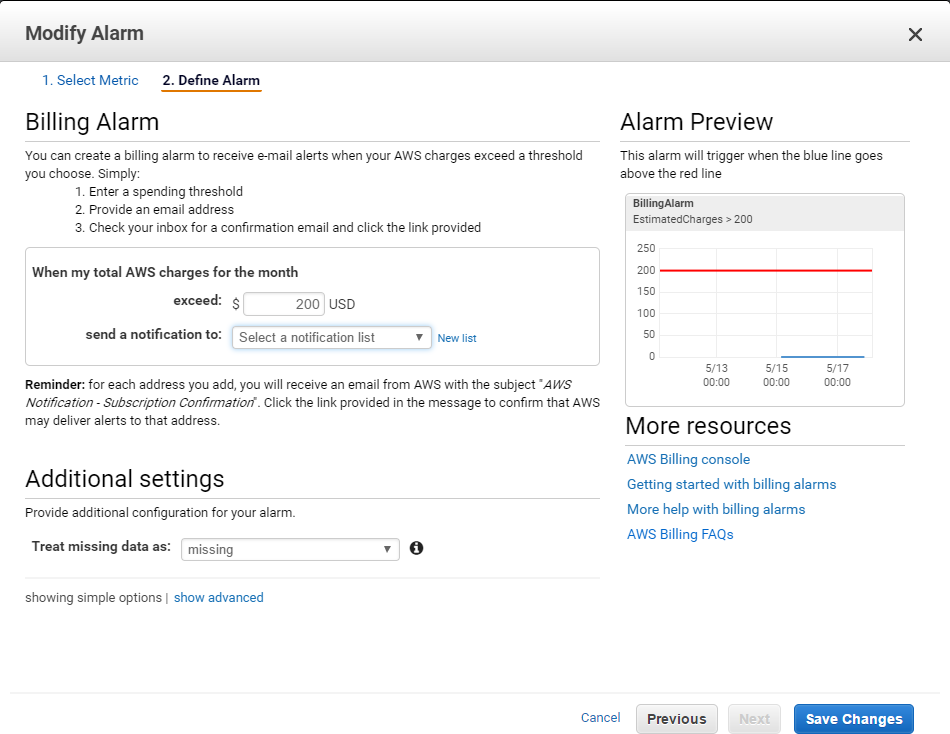
Figure #1. Modifying your Billing Alarm
The Billing Alarm uses the AWS Cloudwatch service and the metric named EstimatedCharges.
After you complete before the procedure you’ll receive an email as soon as your account’s usage exceeds the free tier limits. At that point, you can decide whether to terminate the AWS resources that have exceeded the free tier limits, or keep them running and be billed at the standard AWS rates.
The Cost Explorer
The AWS Billing and Cost Management console includes the no-cost Cost Explorer tool for viewing your AWS cost data as a graph. With Cost Explorer, you can filter graphs by API operations, Availability Zones, AWS service, custom cost allocation tags, Amazon EC2 instance type, purchase options, region, usage type, usage type groups, or, if you use Consolidated Billing, by linked account. You can also see a forecast of future costs based on your historical cost data.
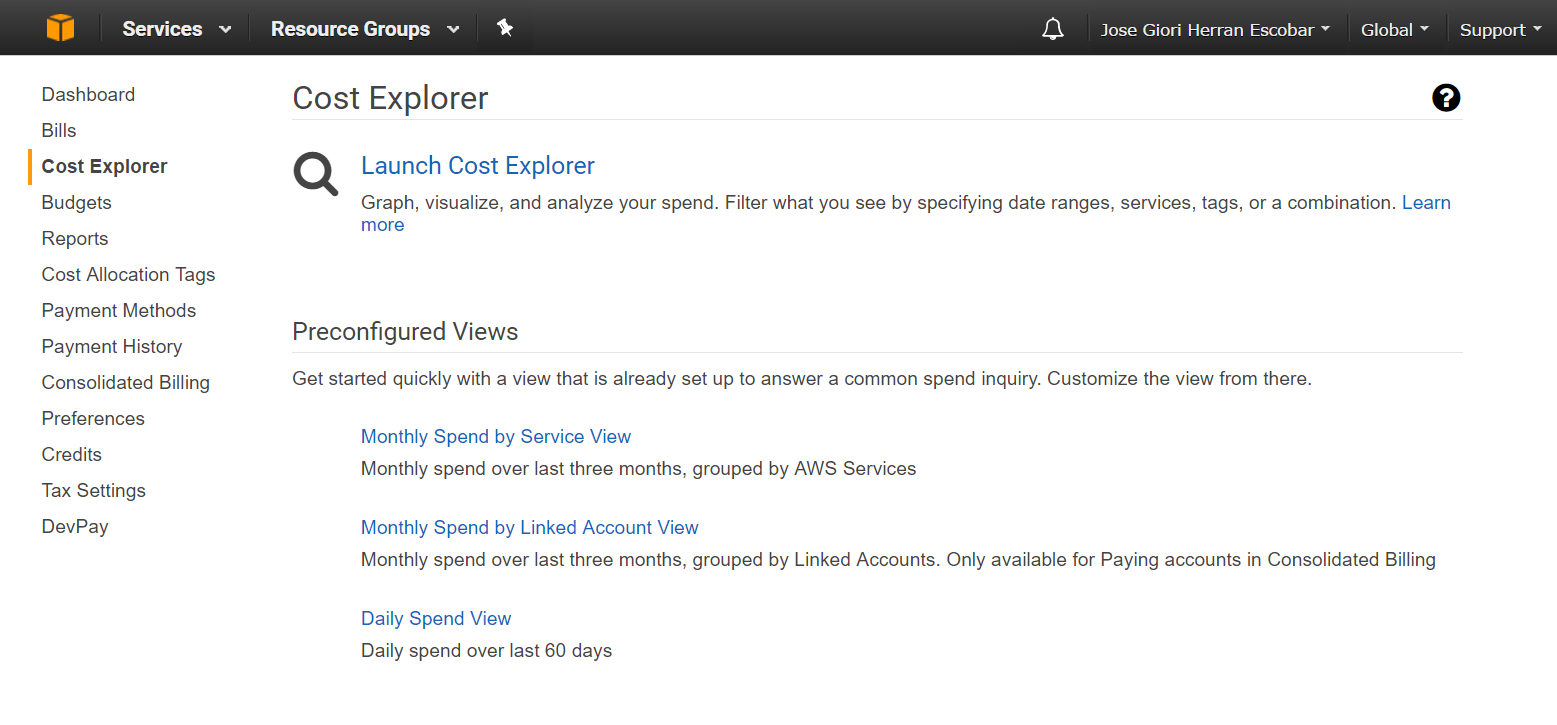
Figure #2. The Cost Explorer
AWS Cost Explorer gives you the ability to analyze your costs and usage. Using a set of default reports, you can quickly get started with identifying your underlying cost drivers and usage trends. From there, you can slice and dice your data along numerous dimensions to dive deeper into your costs.
One powerful cost management feature available in Cost Explorer is to filter and group your Cost Explorer data according to your resource tags. Tagging gives you the ability to create resource groups that that match your business structures, making it easier to map your resources and workloads to the appropriate cost center.
Cost Explorer can be accessed from the AWS Management Console and you are provided with pre-configured views that show three common spend queries. These show your monthly spend broken down by AWS service, monthly spend broken down by linked account and total daily spend. You can further customize these preconfigured views to meet your needs, for example by customizing the time range you wish to view, view data at a monthly or daily grain or drill down further into your data based on services, linked accounts, and tags. You can also bookmark views to save custom settings for use in the future.
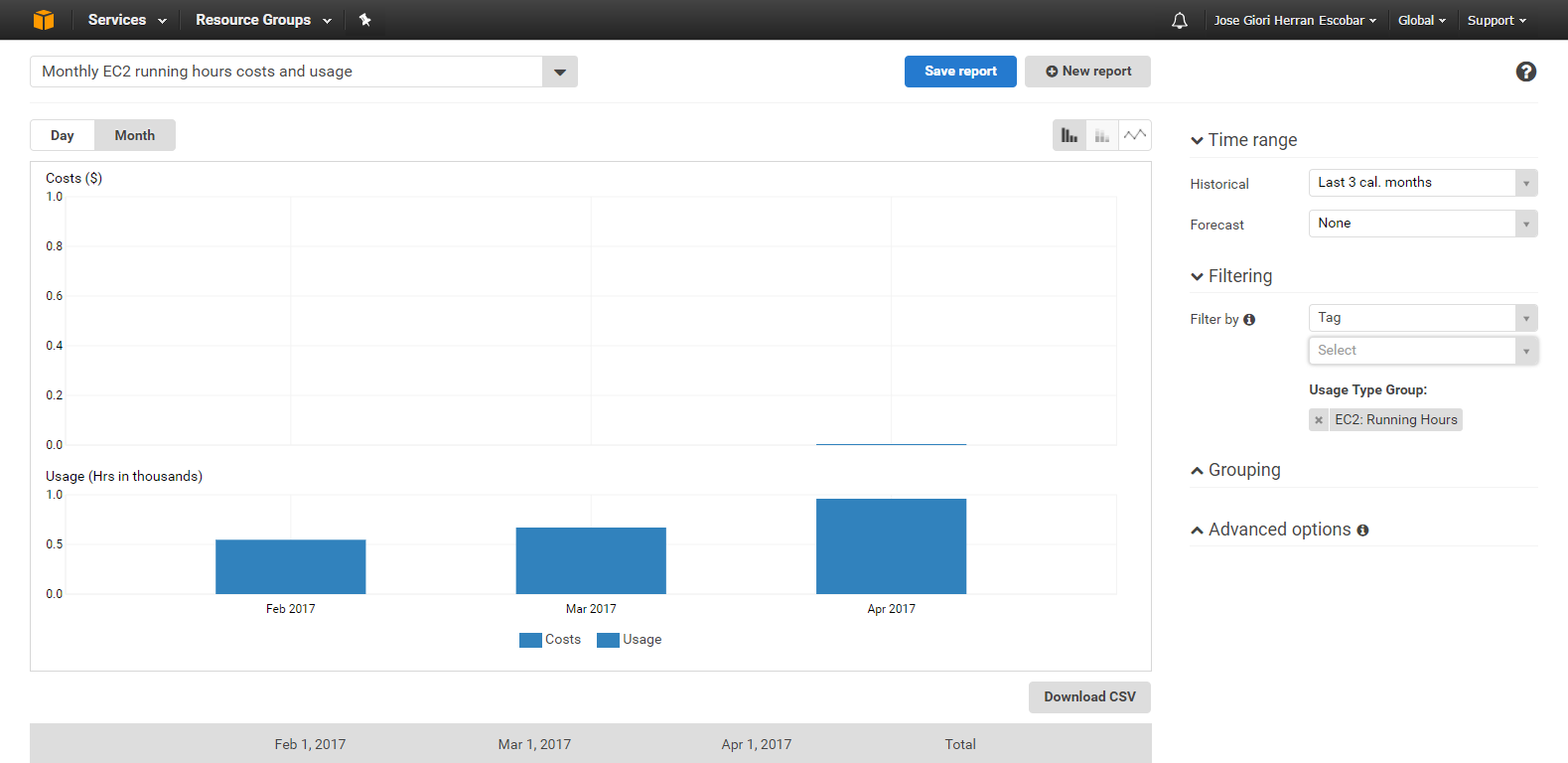
Figure #3. Filtering cost and usage data into the Cost Explorer
You can view data for up to the last 13 months, and forecast how much you are likely to spend for the next three months. You can use Cost Explorer to see patterns in how much you spend on AWS resources over time, identify areas that need further inquiry, and see trends that you can use to understand your costs. You also can specify time ranges for the data you want to see, and view time data by day or by month.
Benefits of Consolidated Billing
You can use the Consolidated Billing feature to consolidate payment for multiple Amazon Web Services (AWS) accounts within your organization by designating one of them to be the payer account.
With Consolidated Billing, you can see a combined view of AWS charges incurred by all accounts, as well as get a cost report for each individual account associated with your payer account. Consolidated Billing is offered at no additional charge.
There are some benefits of Consolidated Billing:
- One Bill: You get one bill for multiple accounts.
- Easy Tracking: You can easily track each account’s charges and download the cost data in CSV format.
- Combined Usage: If you have multiple accounts today, your charges might decrease because AWS combines usage from all the accounts to qualify you for volume pricing discount
You must designate your account as a payer account. Now your account can pay the charges of the other accounts, which are called linked accounts. The payer account and the accounts linked to it are called a Consolidated Billing account family.
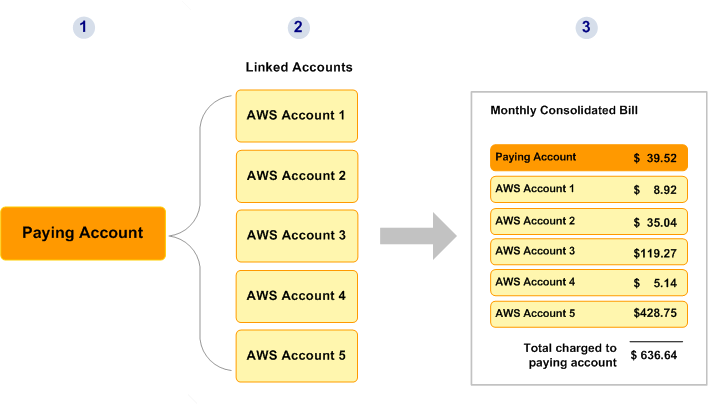
Figure #4. Linked Accounts into a Payer account
The payer account is billed for all charges of the linked accounts. However, each linked account is completely independent in every other way
Important Points to Remember for the AWS Certified SysOps Administrator – Associate Certification exam
- AWS Billing and Cost Management is the service that you use to pay your AWS bill, monitor your usage, and budget your costs
- You can effectively manage and control your AWS costs, and pay for only what you use
- AWS Cost Explorer permits to analyze your costs and usage. Use Cost Explorer to optimize savings
- AWS updates the report in your bucket once a day in comma-separated value (CSV) format
- Billing reports provide information about your usage of AWS resources and estimated costs for that usage
- AWS Organizations enables you to set up a single payment method for all the AWS accounts in your organization through consolidated billing
- With consolidated billing, you can see a combined view of charges incurred by all your accounts and take advantage of pricing benefits from aggregated usage, such as volume discounts
- You must designate an account as a payer account, link other accounts to it and pay the charges from all as a AWS organization unit
- Before you create a billing alarm, you must enable billing alerts
- The Billing Alarm use the AWS Cloudwatch service and the metric named EstimatedCharges
- You can decide whether to terminate the AWS resources that have exceeded the free tier limits, or keep them running and be billed at the standard AWS rates
Glossary
| Term | Brief description |
| Consolidated Billing | A feature of the AWS Organizations service for consolidating payment for multiple AWS accounts. You create an organization that contains your AWS accounts, and you use the master account of your organization to pay for all member accounts. You can see a combined view of AWS costs that are incurred by all accounts in your organization, and you can get detailed cost reports for individual accounts. |
| AWS Billing and Cost Management | The AWS cloud computing model in which you pay for services on demand and use as much or as little at any given time as you need. While resources are active under your account, you pay for the cost of allocating those resources and for any incidental usage associated with those resources, such as data transfer or allocated storage. |
| Chargeable Resources | Features or services whose use incurs fees. Although some AWS products are free, others include charges. |
| Billing Alarm | An item that watches a single metric related to billing over a specified time, and triggers an Amazon SNS topic or an Auto Scaling policy if the value of the metric crosses a threshold value over a predetermined number of time periods. |
| AWS Organizations | An account management service that enables you to consolidate multiple AWS accounts into an organization that you create and centrally manage with the purpose of consolidate billing across those AWS accounts |
Summary
In this article, we have explained about the billing management and cost optimization processes related to AWS, how to manage your charges, and monitor your costs and pay your bill associated to AWS services and resources provide by Amazon.
References:
[1] Amazon Billing FAQs. Amazon AWS. https://aws.amazon.com/billing/faqs
[2] Amazon AWS Billing and Cost Optimization Documentation. Amazon AWS. https://aws.amazon.com/documentation/account-billing/
[3] How AWS Pricing Works. Amazon AWS.https://d0.awsstatic.com/whitepapers/aws_pricing_overview.pdf
[4] AWS Certified SysOps Administrator – Associate Certification.https://aws.amazon.com/certification/certified-sysops-admin-associate/
[5] AWS Glossary. Amazon AWS. http://docs.aws.amazon.com/general/latest/gr/glos-chap.html
- Top 20 Questions To Prepare For Certified Kubernetes Administrator Exam - August 16, 2024
- 10 AWS Services to Master for the AWS Developer Associate Exam - August 14, 2024
- Exam Tips for AWS Machine Learning Specialty Certification - August 7, 2024
- Best 15+ AWS Developer Associate hands-on labs in 2024 - July 24, 2024
- Containers vs Virtual Machines: Differences You Should Know - June 24, 2024
- Databricks Launched World’s Most Capable Large Language Model (LLM) - April 26, 2024
- What are the storage options available in Microsoft Azure? - March 14, 2024
- User’s Guide to Getting Started with Google Kubernetes Engine - March 1, 2024
